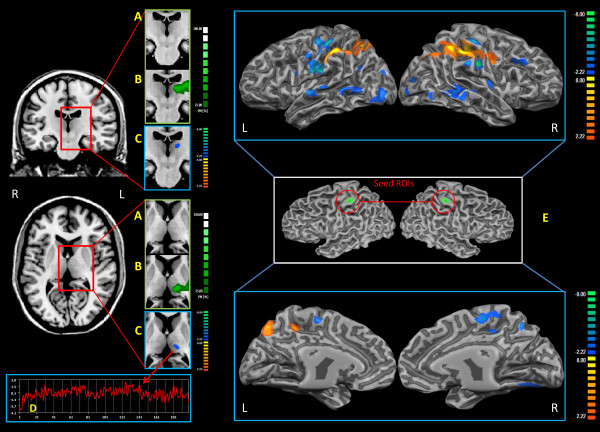Figure 1.
S1 resting state connectivity analysis. A: Probabilistic maps of the S1 rsFC thalamic projection relative to pain subjects. B: Probabilistic maps of the S1 rsFC thalamic projection relative to healthy subjects. C: Group comparison of the S1 rsFC thalamic projection (Two sample t-test q<0.05 FDR-corrected, minimum cluster dimension K>5 voxels in the native resolution). D: Example of the time course of a healthy subject. E: Group comparison of the S1 rsFC brain projection (Two sample t-test q<0.05 FDR-corrected, minimum cluster dimension K>5 voxels in the native resolution). Right middle panel represents the Seed ROI. Colors from green to white indicate an increasing spatial overlapping probability (%) (single subject correlation maps before probabilistic map creation thresholded at q<0.05 FDR-corrected, minimum cluster dimension K>5 voxels in the native resolution). Colors from red to yellow indicate an increased connectivity in the pain group; colors from blue to green indicate a reduced connectivity in the pain group. All rsFC maps were projected on 3D representations of the brain using BrainVoyager QX.

